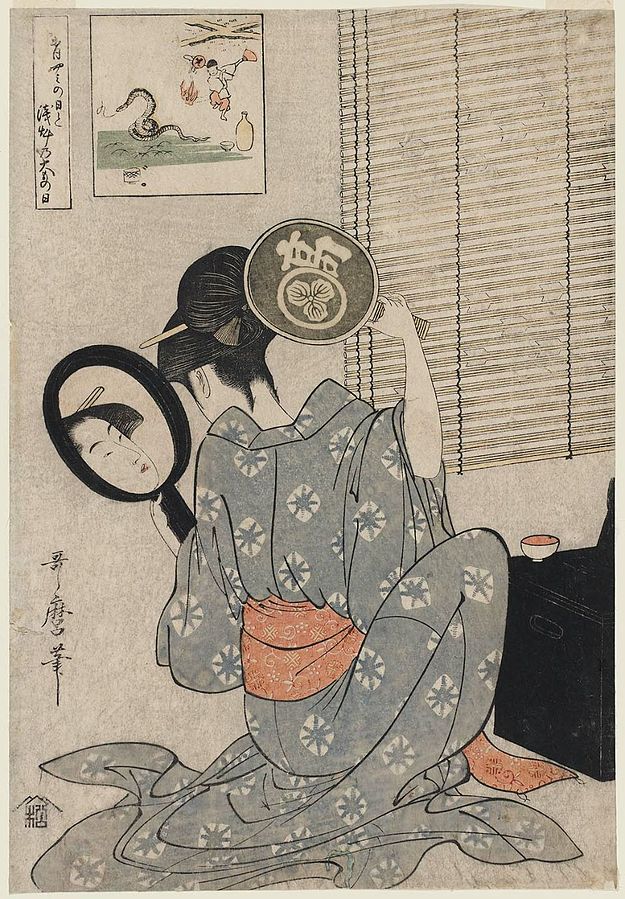
Ukiyo-e and Master Kitagawa Utamaro
Ukiyo-e is a genre of Japanese art that was very popular during the 17th and 19th centuries. Artists would produce woodblock prints and painting of various subjects. The word “ukiyo-e” means “pictures of the floating world.” This floating world refers to the idea of a place of impermanence where people live for the moment, through forms of entertainment (such as kabuki, noh, bunraku, geisha, and courtesans) that are removed from the ordinary everyday world.
 Kitagawa Utamaro’s “Ase o fuku onna (Woman wiping sweat)”.
Kitagawa Utamaro’s “Ase o fuku onna (Woman wiping sweat)”.
The chōnin class, comprised of merchants, craftsmen and workers, considered to be at the bottom of the social order, were the ones who were considered to benefit the most during the rapid economic growth during the Edo period. The chōnin were the biggest patrons of entertainment. Kabuki theatersm geisha, courtesans of the pleasure districts thrived. The term ukiyo came to describe the particular hedonistic lifestyle. The printed or painted ukiyo-e art was very popular amongst the chōnin class who could afford to decorate their homes with the art. Many were actually posters that advertised brothels and Kabuki plays. Ukiyo-e became popular during this time because it was easily mass produced, which meant that those who were strapped for cash could sometimes afford some of the woodblock prints.
Kitagawa Utamaro’s “Flowers of Edo Young Woman’s Narrative Chanting to the Samisen”.
Ukiyo-e was also used to depict the grandeur of nature. Hokusai with his “The Great Wave off Kanagawa” being synonymous to Japan and Hiroshige “The Fifty-three Stations of the Tōkaidō” were well-known artists who created beautiful landscapes. Another popular ukiyo-e artist is Kitagawa Utamaro (1753 – 31 October 1806). He is highly regarded for his work on bijin ōkubi-e “large-headed pictures of beautiful women” of the 1770s while his fame peaked in the 1790s. Among his works is the illustrated books of insects.
Very little is known about Utamaro’s life. He produced more than 2000 known prints and was considered to be one of the few ukiyo-e artists to achieve fame throughout Japan. Utamaro’s work reached Europe in the mid-nineteenth century and his works were particularly popular in France. He is also credited to have influences European Impressionists with his use of partial views and his emphasis on light and shade.

